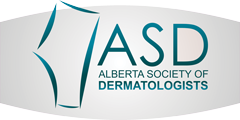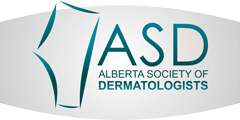Eczema: Etiology & Treatment
The term “eczema” can actually mean one of several medical conditions, though most mean atopic dermatitis. This is a hereditary disorder, which means it runs in the family. Most often, affected individuals first discover symptoms in childhood. Doctors characterize eczema as a condition that causes itchy rashes all over the body, including the arms, legs, face and torso.
Common Forms of Eczema
Atopic Dermatitis
Atopic Dermatitis is the most common of all types of eczema, mostly due to the fact that it’s a hereditary condition. Canadians in particular are at risk for developing eczema; up to 17 percent of Canadians may experience atopic dermatitis during their lives.
It is common for atopic dermatitis to start as young as infancy; symptoms include inflamed skin that is itchy behind the knees, on the neck, inside the elbows, and/or on top of the hands. It is also common to develop hay fever or asthma alongside eczema. Other family members likely also experience similar symptoms.
Contact Dermatitis
Contact Dermatitis can be further classified into two finer categories: irritant or allergic. Irritant contact dermatitis occurs more often after repeatedly exposing the skin to chemical damage; for example, harsh cleaning products and soaps can thoroughly dry out the skin, causing itchiness from skin damage. As the protective skin layer becomes damaged, inflammation starts.
The less common of the two, allergic contact dermatitis, usually occurs 48 hours after coming into contact with a substance the patient is allergic to. The symptoms won’t begin right away; the immune system reacts on a delay. The most common cause of allergic contact dermatitis is poison ivy; in addition to the infamous plant, dyes, perfumes and metals can all trigger dermatitis.
Less Common Variations:
- Dyshidrotic: This form of eczema causes water blisters on the feet, palms and fingers. The blisters are small and cluster together, forming very itchy patches that can burst when scratched.
- Lichen Simplex: This type of eczema produces thick patches of itchy plaque over the wrists, inside the thighs, on the ankles, on the sides or behind the neck.
- Nummular Eczema: This variation occurs mostly on the arms, hands and legs, showing a round patch of dry skin.
- Seborrheic Eczema: Patients with this condition experience greasy, yellowish patches across the nose, eyebrows and scalp.
- Stasis Dermatitis: Patients experience chronic eczema on the lower legs and may also develop varicose veins.
Treating Eczema
Regardless of the type of eczema a patient has, the condition demands a mix of treatments that work for the individual. A dermatologist can help provide expert input on which course of treatment will work best to help keep the condition under control; some methods will be less effective than others depending on the exact kind of eczema.
Over-the-Counter Medications
Antihistamines are a good starting point as they are designed to alleviate itching and induce drowsiness and sleep. Moisturizers can also improve skin dryness. These products add moisture to scaly skin and helps the area feel smooth again. Physiologic moisturizers in particular have essential oils, such as ceramide, that is absent from affected skin.
Cool compresses won’t work as functional treatment, but it does cool the skin enough to calm itching and inflammation. Coal tar is one final over-the-counter remedy to try; it comes in ointments, soaps, shampoos and bath oils.
Prescriptions
Only a dermatologist can prescribe certain medications to help fight eczema. Antibiotics are a common choice when the patient has a secondary infection caused by eczema. The barrier of skin breaks down between the inflammation and the patient scratching, allowing bacteria to infect the area.
If a dermatologist prescribes corticosteroids, use these regularly until the inflammation is gone. This treatment is very effective regardless of the severity of the condition; these agents are made in various strengths.
For chronic conditions, a dermatologist can prescribe a topical calcineurin inhibitor, which attempts to calm the immune system within the skin. The purpose is to prevent flare-ups from recurring regularly.
Phototherapy
Finally, phototherapy is an option in extreme cases; this treatment requires regular exposure to ultraviolet light to quell symptoms. Like with other prescribed methods, this should only be considered under the supervision of an experienced dermatologist.

